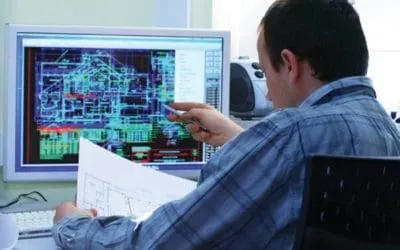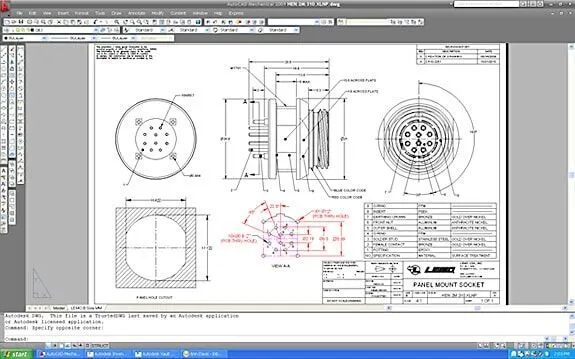Uses for 3D Scanning and Types of 3D Scanners
Uses for 3D Scanning and Types of 3D Scanners
Quite simply…anyone who needs a faster, easier way to make…well, ANYTHING! As long as you have something physical to start with that can be scanned, and there are virtually no limitations as to size, location, or position, as long as you have the right scanner for the job.
Here are some examples:
Hollywood movie makers and video game animators regularly use 3D scanning and 3D printing for characters and special effects.
Hospitals and dental labs use these types scanning devices to create digital models body parts and teeth in order to make perfectly fitting prosthetics and dentures.
Museums and galleries use 3D scanners to make replicas of everything from artifacts and statures to dinosaurs.
Architects and Designers can avoid spatial conflicts when remodeling anything from factories and schools to houses and bridges by using a laser scanner to scan and plot the existing construction, then creating a Building Information Model (BIM) to remodel virtually.
- Hobbyists of all types use small, inexpensive “hobby” 3D scanners to make everything from teacups to robots.
- Surveyors use 3D scanning to monitor coastal erosion, slope deterioration, buildings, bridges, power stations, refineries, dams, railway infrastructure, topography and more, depending upon what they’re surveying. If it’s solid…they can scan it.
- Forensics analysts, whether they are recreating a crime scene or a crash site, 3D scanning helps them determine what happened.
With so many different uses for 3D scanning, it’s not surprising that there are different types of 3D scanners:
Laser scanners
Laser scanners can be hand-held or mounted and can make use of one or more these technologies: triangulation, time of flight and phase shift. Through “laser triangulation,” laser scanners calculate the exact shape and size of an object. “Time of flight” is based on the laser light impulse which is sent by a scanner to the scanned object. The distance to the scanned object is calculated according to the time that elapses from the moment of sending the laser light until it is captured by a special sensor in the scanner. “Phase-based scanning” utilizes a constant beam of laser energy that is emitted from the scanner. The scanner then measures the phase shift of the returning laser energy to calculate distances.
Regardless of the method, the scanner creates a point cloud on the object, and the 3D laser scanner reconstructs the shape of the object. The colors of the object’s surface can even be determined if color data is also collected. 3D scanners function similar to the way cameras function. However, cameras only capture the X and Y axis, while 3D scanners are able to calculate the Z-axis (distance information) relating to the object as well. They then produce a high quality, 3D image of the object.
3D White Light Scanners
3D White Light Scanners, also known as structured light scanners use a “white light” source such as halogen or LEDs to project a pattern (like a blanket) of pixels that deforms when it strikes the target surface. A 3D reconstruction of the object is created from measurements based on the deformations of the light pattern. Their operation is based on visible light technology and sensors (mostly CCD cameras). Such cameras make possible to obtain the high precision data used for creating the digital 3d model. The scanners of this type are often equipped with several sensitive elements.
One of the advantages of white light scanners over laser scanners is that the light emission used for digitizing the object is harmless to the human eye, while laser light can harm human eyes, and care must be taken when using a laser scanner.
Photogrammetric scanners
Photogrammetric scanners are older technology and photogrammetry has been around as long as modern photography. Its primary use is in mapping and topography. By comparing multiple photographs, these scanners enable the recovery of the exact positions of surface points, as well as. motion pathways of designated reference points located on any moving object, on its components and in the immediately adjacent environment. Photogrammetry may employ also use high-speed imaging and remote sensing in order to detect, measure and record complex 2-D and 3-D axis.
By utilizing multiple images of the object the photogrammetry software detects the common points to form a 3D model.
Coordinate-measuring machines (CMMs)
Coordinate measuring machines (CMM) are devices used for measuring the physical geometrical characteristics of an object. Initially, these machines consisted of manual probes that were either manually controlled by an operator or they could be computer controlled. Measurements are defined by a probe attached to the third moving axis of this machine. Today’s probes may be mechanical, optical, laser, or white light.
Unlike other forms of 3D scanning that are “non-contact” CCMs must touch the scanned object in order to obtain the data about its geometry. Moreover, this technology is not nearly as accurate as laser white light scanners.
Recent Posts


CAD Outsourcing Doesn’t Have to Be Done In India
CAD Outsourcing Doesn’t Have to Be Done in India Do a Google search for “CAD Outsourcing” and what you’ll find is lots of firms located in India, which is fine if you’re prepared to go off-shore for CAD services. But what if your U.S. based company prefers to stay a...

AutoCAD Fiber Optic Designs & Drawings
Before proceeding forward in explaining the affinity between AutoCAD and Fiber Optic, it would be prudent to rationalize the utility of optical cables. When communicating between systems, either via the internet or via an internal network system, a medium needs to be...

CAD Outsourcing: How to Get the Most Out of Engineering
In today’s competitive market, companies need as much help as possible. If you want to take a larger market share, you can start by outsourcing some of your work. This is a quick way to expand your engineering power without onboarding and training a new staff. This...
